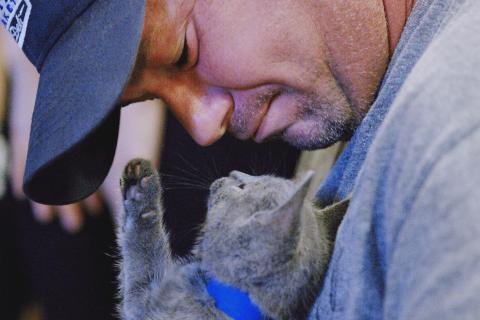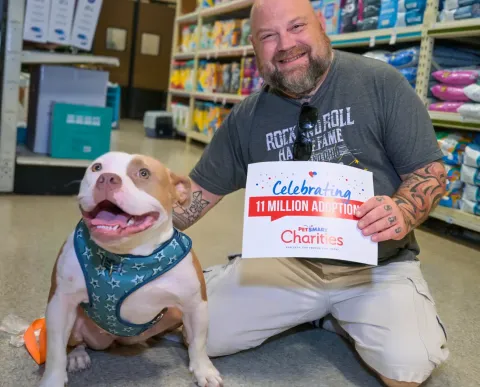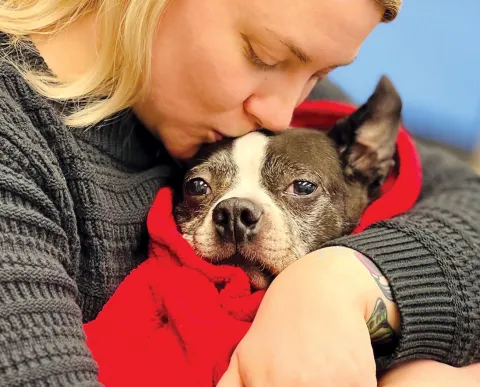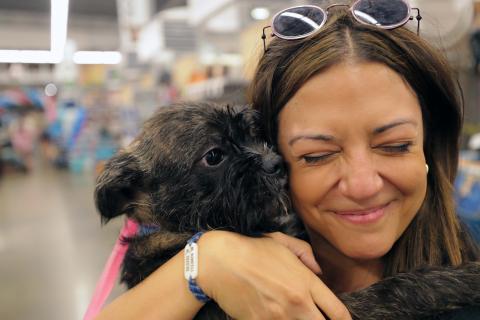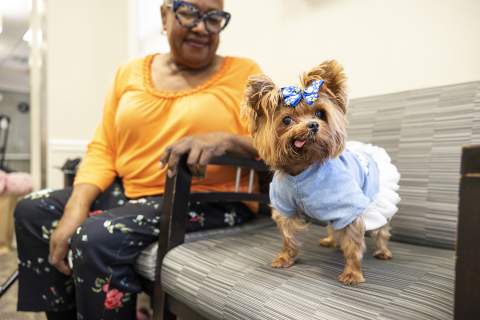The “Go Bag”
There’s that one section in every closet that remains nearly untouched. The section where we can’t bear to clean it out, donate the clothes, or even pack the clothes up in a box to move to the attic for storage, because every time we walk in the closet and see it, we think, “But what if I need that ______ again?” I suspect it’s an entirely normal part of the human existence because I understand I’m not the only one on the planet who does this.
In my closet, my untouched section happens to be a lovely rainbow of safety orange shirts, complemented by a few in the fluorescent green hue, and completed by tan colored 511 pants, several pair of boots, and of course, my “Go Bag.” What’s a “Go Bag” you ask? It’s the bag you have prepared for crisis, disaster, or emergencies when you serve in the field as a responder. When I worked large scale cruelty cases it contained things like Vicks vapor rub (to mask smells no nose should ever have to encounter), slip leads, bite gloves, sharpies, paper collars, a pop-top can of wet cat food and zip ties among other things. But, during hurricane season, the contents changed slightly to include flashlights, folding tactical knives, extra socks, an extra one of those safety orange shirts mentioned above, first aid kits, beef jerky, granola bars, and more. My “Go Bag”, last I looked, has an unhealthy layer of dust and dog slobber on it. If it could write this blog instead of me, it would tell you of its many adventures: remote mountain top rescue missions for wolf-hybrids, horses saved from swimming pools, hundreds of cats in a home, or that time it had to welcome a Tyvek suit into the mix for a case at a home with German Shepherds, cocker spaniels, and Legionnaires disease (not to mention the excitement of trip wires, bombs, and 35 ammo cans full of ammo dating back to the Korean War). It would also talk about the hurricanes like Irene, Sandy, Matthew, and Hermine…and the one that got away, Katrina. (You see this “Go Bag” didn’t enter my closet until after my work in Katrina.) But today, the “Go Bag” sits. It waits patiently for the moment I will rush into my closet, don the safety orange shirt and tan 511 pants, check its contents and rush back out the door to whatever adventure awaits.
It takes a team
Field responders to disaster carry an immensely important role whether they are serving the two or four-legged version of beings. They risk a great deal to help others, leaving family or their own pets behind, facing dangerous circumstances, and often seeing difficult things – the kind that can never
beerased from one’s mind. For those who do this work, they believe it is an honor to serve and help others, and they have skill sets both learned and inherent that help them do this work well.
However, behind every set of responders is an even larger group of people who serve differently. They field calls for help, they manage supplies to be deployed, they find the housing locations for those in the action, call in the other teams to serve, organize communication efforts to maintain the response, and much, much more. Every team in the field knows they would not and could not be as effective without the support behind the scenes. That team behind the scenes may never have to wear safety orange, fluorescent green, or reflectors but they carry as much responsibility for the overall success of responding during disaster as the field responders do, they just do it from places like command centers, emergency operations centers, or headquarters like the one PetSmart Charities has in Phoenix, Arizona.
Know your role
In the last blog in this series, I shared with you that my husband has an important saying, “underprepare to be overwhelmed, overprepare to be underwhelmed.” It’s a great message for each of us as we think about preparing our own families and pets for disasters. He also has a great one for the responding community, “Know your role.” You see, he’s seen every major hurricane this country has endured from Andrew to Matthew (and the complete list in between like Katrina, Charlie, and others). He’s also served two tours overseas in Iraq, and serves daily now as a law enforcement officer. I’m proud of the work that he’s done and does as a first responder but he’s quick to appreciate that it takes many people and teams working to serve effectively during these times and even quicker to articulate to team members that knowing your role and doing it to the best of your ability is what creates success and reduces failure. If everyone involved wanted to drive the rescue vehicle, or everyone wanted to make meals, or everyone opened shelters, then the other functions during these times would not get done making the response ineffective and therefore, compromising lives.
At PetSmart Charities, we know our role. Was it tempting to think about my “Go Bag” sitting lonely in my closet as Harvey, Irma and Maria made landfalls last year? Of course. But, I know that teams in animal field response during those disasters and animal shelters preparing for surge capacity of pets that fell victim to flood waters,
destroyed homes, or injured owners, need someone to support them. That someone is PetSmart Charities.
Thanks to the generosity of PetSmart shoppers who donate at the checkout or donors who send us checks or give on-line, PetSmart Charities has the ability to leverage those many gifts into immediate impact.
PetSmart Charities focuses on our strengths of mobilizing national connections, our nimble ability to deploy funds, and using our strategic, experienced minds to facilitate seamless support to the responders doing the boots-on-the-ground work. In a command-center like room during Harvey, Irma, and Maria, teams of people managed the calls and requests for support from national, regional, and local agencies. They managed maps of affected areas and logistics timelines for when truckloads of food, crates and supplies could arrive. They facilitated payments of over $3 million to organizations and agencies who needed help. For some that help meant generators and medical supplies. For others, like with the Houston SPCA, it meant paying for 13 teams from across the country to travel to Houston to rescue animals. And, still for others, it meant transportation costs to reunite lost pets from Puerto Rico with their families – families who had lost everything yet got to experience joy in the aftermath of the storm because they regained a part of their normalcy, a part of their life, and a part of their future by seeing that cute, fuzzy face and wagging tail or purring sound. Each distribution of funds – whether it was $5,000 or $150,000 – and each truckload of food or supplies, meant lives saved, meant lives restored, and meant families reunited. While there were no safety orange shirts involved (we wore navy blue, actually), PetSmart Charities was and remains a vital part of the response and rebuilding efforts for places, people and pets who faced those trying moments.
But what about the “Go Bag?”
I couldn’t be more proud of the work that PetSmart Charities does during natural disasters. I watched team members work long hours making sure trucks of emergency supplies would arrive despite difficult conditions, I knew of the phone calls at all hours of the night from desperate organizations needing a lifeline of funding, and I heard the compassionate tone as conversations sharing “help is on the way” would create hope during a seemingly hopeless time. As our donors trusted us to deploy the funds, food, and supplies responsibly and quickly, we trusted our partners who were boots-on-the-ground to execute their work effectively. Last year, in total, PetSmart Charities deployed $4.3 million in funds and supplies, and truckloads of food to support responders and people affected by these storms. You might say that the PetSmart Charities “go bag” looked more like laptops, phones of every type, logistics spreadsheets, giant maps, tv sets, and many, many cups of coffee, all activated over 48 days straight in that command-center type room. We know our role and we are proud to serve in this way; leveraging your donor dollars for the benefit of millions of animals and thousands of organizations.
But, not to worry, the dusty, black, dog-slobber-covered “Go Bag” that sits with its companion boots, safety orange shirts, and tan 511 pants isn’t going anywhere. You know…just in case.









